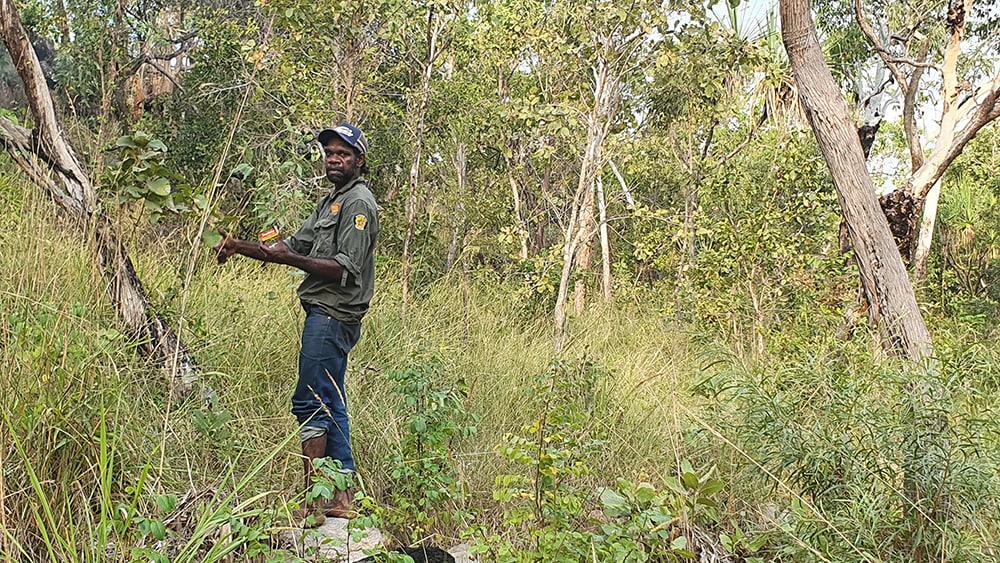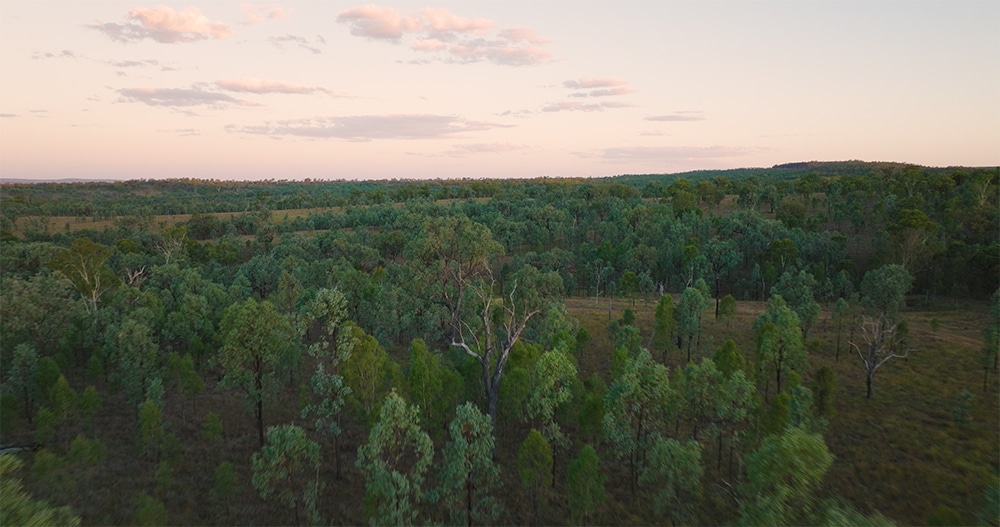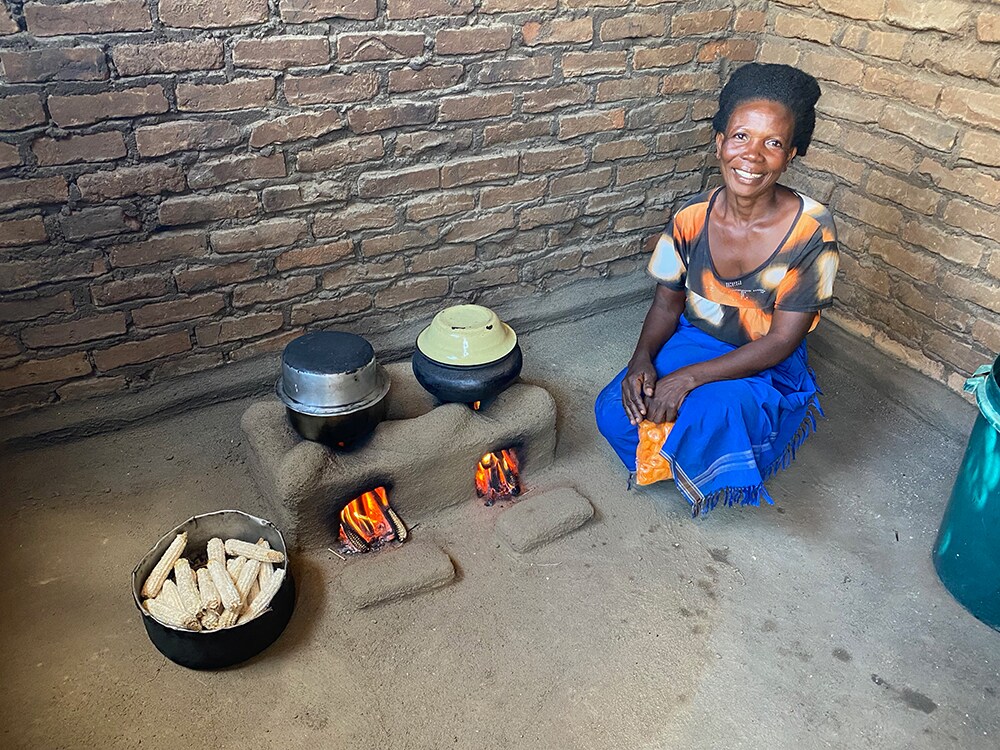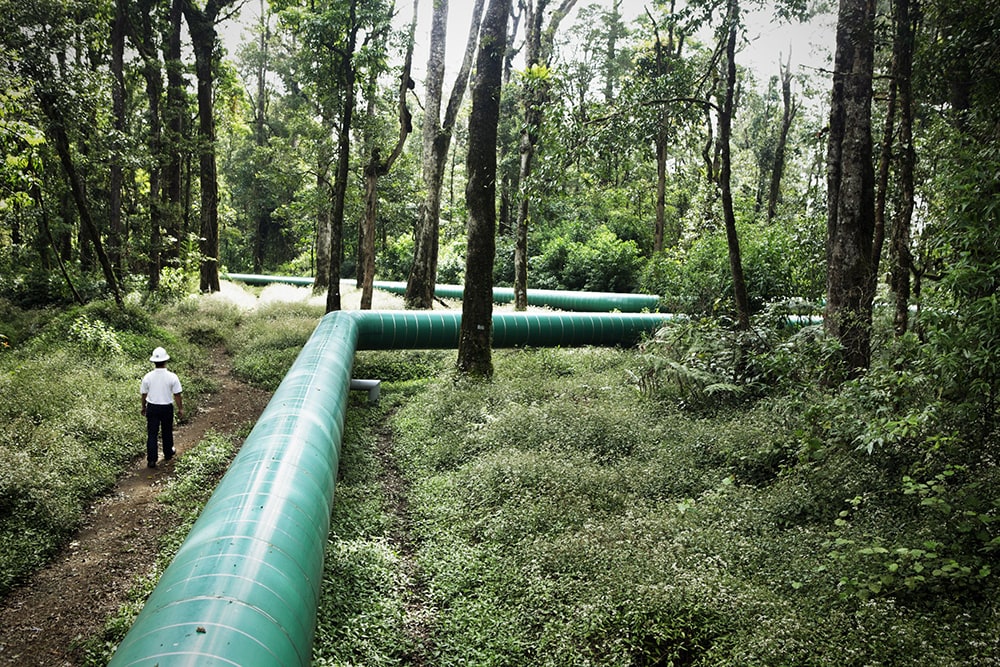Support climate action, every time you fly
We know that flying has adverse impacts on the climate, and that nothing can directly remove the carbon emissions of your flight.
But when you choose to add Climate Action to your flight, you support important climate projects that remove or avoid carbon emissions, while delivering additional benefits – such as improved biodiversity and soil health - to places we love to travel here in Australia and around the world.
How does the climate action program work?

1. We calculate the estimated carbon emissions of your flight
Relevant emissions sources are included in calculating the footprint of your flight, including aviation fuel, engine oils, fuels used by ground vehicles and equipment, electricity, aircraft cleaning and waste, crew transport and accommodation, aircraft manufacture and catering.
The calculation is based on actual flight data from the past twelve months for each route flown. We divide the total emissions per route by the number of passengers who traveled on those routes during that time, adjusted to account for freight (freight emissions are not covered by the Climate Action Program).
An independent third-party verifies our fuel and electricity measurements, to check our calculations are accurate and complete.

2. You can choose to tick the box to make a voluntary contribution
If you book at virginaustralia.com, you’ll be given the option to add Climate Action, either by using Velocity Points or by adding a small fee. All you need to do is head to the ‘Customise your trip’ section of the booking page and tick the box.
If you have an existing booking, it’s not too late. Simply log in to ‘Manage Bookings’ and you’ll be given the option to add Climate Action.

3. Your contribution supports important climate projects that remove or avoid emissions
Across Australia and around the world, climate projects play an important role in reducing the impacts of climate change. These projects generate carbon credits, with one carbon credit representing one tonne of carbon emissions removed from the atmosphere (e.g., regenerating forests that draw down carbon from the atmosphere) or avoided from entering the atmosphere (e.g., by transitioning to more fuel-efficient energy sources).
We carefully select climate projects that reduce or avoid emissions, while also offering other environmental or community benefits, such as improved biodiversity and soil health. We partner with Environmental Markets Australia and trusted climate project developers like GreenCollar, to purchase high-quality carbon credits from registered, independently audited projects.
FAQs
-
Haven’t carbon credits been debunked?
There are two common criticisms of carbon credits. So, let’s look at them each of them.
First - carbon credits are being used as the primary focus of emissions reductions, distracting from the urgent need to directly reduce emissions.
Our main decarbonisation focus at Virgin Australia is reducing carbon emissions at the source, including building the foundations for an affordable transition to sustainable aviation fuel. You can learn about our actions toward net-zero aviation here.
This journey is long, and climate change can’t wait. So, while we keep innovating and investing, we also use carbon credits to support incredibly important climate action projects that remove carbon (such as regenerating forests that draw down carbon from the atmosphere) or avoid carbon emissions being released (e.g., by transitioning to more fuel-efficient energy sources).
Second - there have been serious issues with some climate projects not delivering the stated carbon reductions
There have been criticisms around the effectiveness and integrity of certain climate projects, which has undermined the sector’s credibility and its ability to address climate change.
Scrutiny of carbon projects, markets and verification bodies plays an important role in improving the sector’s integrity and repairing trust in this valuable climate action tool. Recent improvements include:
● Improved data & monitoring
● Improved project quality & integrity criteria
● Stronger policy & regulation
At Virgin Australia, each project we support is carefully reviewed by third-party climate experts at Environmental Markets Australia. Emissions reductions must be measurable, permanent and additional (they would not have happened without the funding provided through selling carbon credits). Supported projects must be registered under an approved standard (Australian Carbon Credit Unit Scheme, the Clean Development Mechanism, Gold Standard, Verra).
We share full details of our program, including projects supported in a detailed annual report, available here.
-
What are carbon credits?
Across Australia and around the world, climate projects play an important role in reducing the impacts of climate change. One carbon credit represents one tonne of carbon emissions removed from the atmosphere (e.g. regenerating forests that draw down carbon from the atmosphere) or avoided from entering the atmosphere (e.g. by transitioning to more fuel-efficient energy sources). Climate projects also have a positive impact on communities on the ground - from providing Indigenous employment, to enhancing local biodiversity and natural resources.
-
Does my climate contribution remove the carbon emissions of flying?
No - the carbon credits purchased by your voluntary contribution does not stop the emissions occurring from your flight.
So, why bother?
Well, our main climate focus at Virgin Australia is reducing carbon emissions at the source. It’s a long journey toward viable and scalable technologies that will reduce aircraft emissions enough to make net-zero possible. We are working on it, including fleet and engine renewal, electric ground equipment and building the foundations for an affordable transition to sustainable aviation fuel.
But climate change is real and urgent. It can’t wait.
So, while we keep innovating and investing to reduce emissions at the source, we also fund climate action now by purchasing carbon credits to support important climate action projects.
Carbon projects invest in measures to reduce, remove or capture greenhouse gas emissions from being released into the atmosphere. Some of the projects focus on removing carbon emissions from the atmosphere, such as planting trees and revegetation. Other projects work to reduce the impacts of human activity such as implementing energy efficiency measures and improved agricultural practices.
-
How do I make a climate contribution for business travel?
Contact your corporate account manager at Virgin Australia for customised corporate climate contribution solutions, or contact the Sustainability team, Sustainabilityteam@virginautralia.com.





